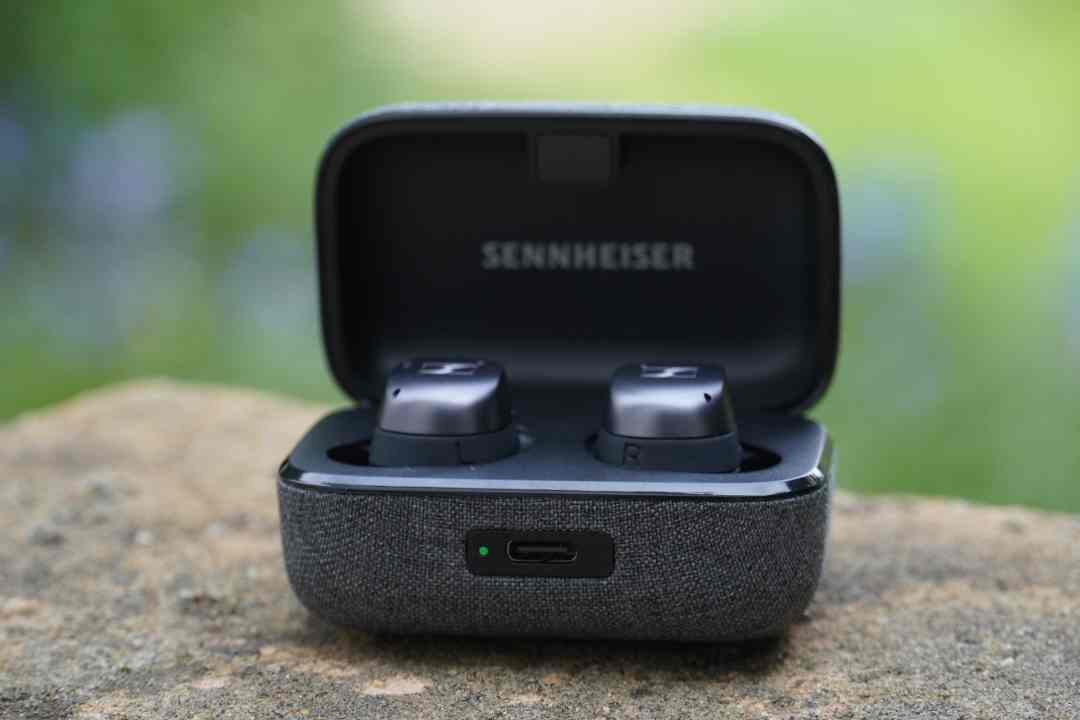
A terrifically insightful performance is the highlight of Grado’s premium Prestige X-series headphones. The changes to the design and drivers maintain the Brooklyn brand’s position as purveyors of neutral headphone sound.
Pros
- Insightful, detailed and spacious presentation
- Striking design
- Low impedance drivers
Cons
- Comfort may be an issue for some
- Design isn’t especially portable
Availability
- UKRRP: £329.95
- USARRP: $295
- EuropeRRP: €353
- CanadaRRP: CA$399
- AustraliaRRP: AU$419
Key Features
-
Leather materialThe headband is made from leather with new leather stitching, too
-
X-series driver4th-generation version with reconfigured design
Introduction
Wired headphones are back in fashion. So, following a dalliance with wireless in the GT220 true wireless and GW100 wireless on-ears, Grado’s latest range – the Prestige series – is back on familiar, classic ground.
The Prestige go back three decades, as the first headphones designed by John Grado. The series speaks to Grado’s identity, and in that respect probably aren’t a range the company would want to mess up.
On the test bench here is the SR325x, the top-of-the-range and priciest of the Prestige X series, sporting a slightly different design from the rest of the pack with their leather headband. As I mentioned, wired headphones are back in fashion, and few brands are as fashionable as Grado.
Design
- Open ear-cup design
- Metal housing for ear cups
- Not especially portable
The Grado SR325x feature a metal housing for each ear cup, which Grado says offers more precision and better stereo imaging. New elements include the headband made from actual leather (a decision that may put off vegans) with white stitching, and the super annealed copper 8-conductor cable claims to offer more durable and offer a purer signal.
The padded foam ‘F’ ear cushions look basic but are comfy, but note since this is an on-ear design, there’s an element of pinching that can occur depending on ear size (mine are quite big) if placement isn’t quite right.
Thankfully, these ear cups don’t heat up the ears overly, and I’ve found that slight adjustment is all that’s needed to alleviate any pressure. In fact, in the time I’ve worn the Grado headphones, I’ve never found them to be uncomfortable. If you’re not used to on-ears, mind, they will take a while to get used to.
While the SR325x can swivel flat, this is about as much portability as they offer, with no means of folding inwards, nor – perhaps surprisingly – a carry case. That brushed aluminium housing looks durable, although the cables aren’t detachable. Life with the Grados will be one of slinging them around your neck when they’re not in use, so everyone can get a look.
The open design won’t fare well on public transport, either – but those familiar with Grado likely won’t mind passers-by listening in on their music tastes.
Features
- Wide claimed frequency range
- Low impedance
- Redesigned drivers
In terms of features, wired headphones don’t present much and that’s the case with these Grados. There’s no in-line mic nor means of control for playback, meaning you’ll be fishing out your mobile phone (if it has 3.5mm jack) or portable music player.
What the Grados lack in convenience, they make up for in an iron focus on delivering optimal sound. Frequency range is claimed to be 18Hz to 24,000Hz, the widest in the Prestige X range. Since an adult’s hearing extends from 20Hz to 20,000Hz, you won’t hear the extra headroom at both spectrums of the frequency range; but you might be able to feel the wider frequency range.
Impedance is 38-ohms, more than the Sendy and Sivga headphones I’ve tested, but low and sensitive enough that a broad range of devices (smartphones, laptops) can drive these SR325x. The speaker design for the 44mm X-series driver has a more powerful magnetic circuit, a voice coil with decreased effective mass and reconfigured diaphragm, which Grado states adds up to reduced distortion, preserving the harmonics of music.
And that’s it. There’s something to be said about the purity of focus that wired headphones offer, reducing the clutter for a performance that’s all about the sound.
Sound Quality
- Clear and insightful
- Measured bass performance
- Spacious presentation
The one consistent aspect about the Grado SR325x is their delivery sound. I’ve used these units with an Astell & Kern portable music player, a Lenovo laptop, with the headphones output of a Panasonic micro system, and with each one the Grados have delivered a consistent performance.
This is down, in part, to the openness the Grados offer. The open-design of the headphones bestows plenty of space and room. The width and organisation of elements within the soundstage also allows for a strong stereo image to be experienced in regard to placement of musical elements and depth.
Another attribute is the Grados’ sense of definition. The frequency range is garlanded with detail, especially in the upper reaches that are brightly reproduced, but not overly so in Miles Davis’ Shhh / Peaceful (24-bit 88.2kHz). The crispness of the cymbal crashes and purity of the brass trumpet is relayed with plenty of distinction.
There’s a naturalism to their presentation, a strong and almost effortless knack of describing instruments with exacting clarity. You can determine the distinction between an actual instrument and electronic sounds. There’s snap, crispness and attack to Ludwig Goransson’s Rainy Night in Tallinn, while bass is handled in a more measured and neutral manner. If you’re after big extended bass, then that isn’t the character the Grados offer – it’s more finely balanced.
There’s no lacking for the Grados’ agility with handling of flowing, rhythmic tracks, nor is there really a crack in the armour in terms of dynamism in a broad sense or at a lower level. Music ebbs and flows in a manner that’s tonally uncoloured.
The same is true of vocals. Clarity verges on purity with Jessie Buckley’s voice in Country Girl, the tone of her voice rendered sharply but naturally. Kendrick Lamar’s verbose rhymes in Element are clearly relayed with no hint of sibilance, Kid Capri’s opening skit sounds sharper than I’ve noticed with other wired headphones – the Grados’ neutrality brings with it plenty of insight.
Good recordings are needed to reveal the best from the SR325x. For example, a 16-bit file of the Raspberries’ Go All The Way is less refined than a 24-bit file of Nick Cave & The Bad Seeds’ Bright Horses from Ghosteen. Nevertheless, there’s a sure-fire confidence about the Grados’ sonic performance, a clarity and neutrality that works across genres, a naturalism that’s unmatched out of the wired headphones I’ve listened to recently. These headphones offer a very enjoyably pure sound that puts them above others at this price.
Latest deals
Should you buy it?
If you value excellent sound Lots of insight and neutrality from the Grado SR325x make them a pair of headphones to use and enjoy over and over again.
You like listening on the go The cables aren’t detachable, there’s no carry case and the open design will leak sound. These Grados aren’t that interested in straying too far from home.
Final Thoughts
There aren’t many holes in the Grado SR325x’s armour. They sound great with their detailed, precise and insightful performance. The only issues are those that have always concerned wired headphones and open on-ears: the comfort and relative lack of portability. In my opinion, the SR325x strike a good balance with comfort levels; but they’re not headphones for use outdoors, more so with music players and systems in the home. See past those slight issues, and the Grado SR325x’s are audiophile headphones without the massive price tag.
Trusted Score
How we test
We test every headphones we review thoroughly over an extended period of time. We use industry standard tests to compare features properly. We’ll always tell you what we find. We never, ever, accept money to review a product.
Find out more about how we test in our ethics policy.
Tested over two weeks
Tested with a range of sources








